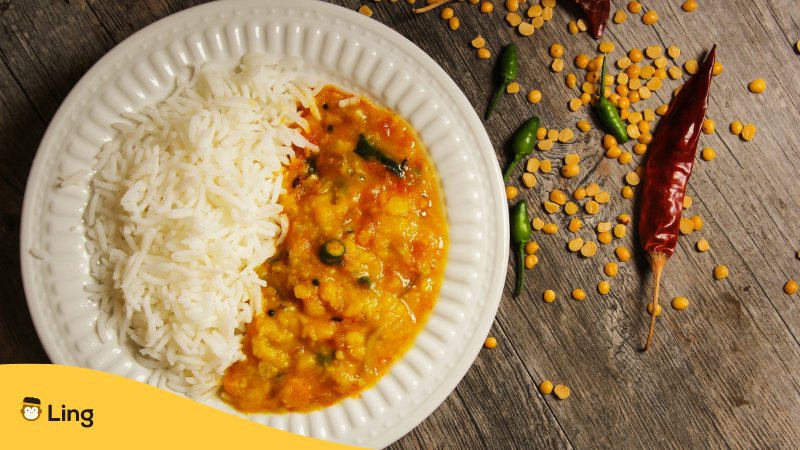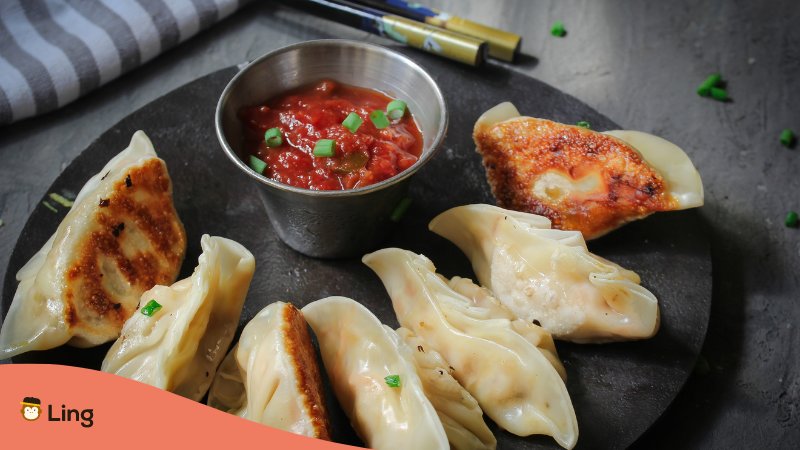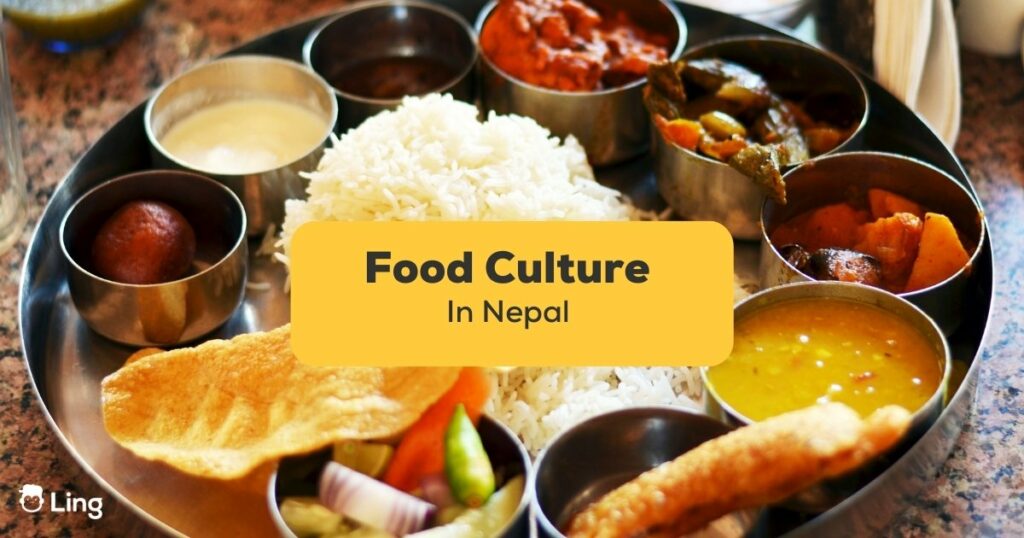Have you ever visited a Nepali restaurant and had the pleasure of tasting its unique flavors? If not, you are surely missing out on something big!
Nepali cuisine has a magic of its own. Known for its simple yet unique taste, Nepali cuisine has crossed borders and satisfied the cravings of all. If you haven’t tried Nepali food yet, now is the time to book your tickets to Nepal and have an authentic dining experience. However, before you plan to sit in a Nepali restaurant and order your treat, you must have a proper idea of the food culture in Nepal and the eating habits of the local people.
Hence, in today’s post, we will walk through the food culture of Nepali people and have a closer look at it. From their staple food to some of the most delicious traditional dishes, you will learn all about it. In case you have already tried Indian food and had a good experience, Nepali food will surely not disappoint you. So, if you are interested, let’s get started!
Food Culture In Nepal: Eating Habits And Influence
Let us start with getting to know the geographical influence and the eating habits of the locals briefly. Only then, we can actually understand their food culture.
Nepal is a beautiful landlocked country. It shares its borders with India, China, Tibet, and Bangladesh. And hence, the influence of its neighboring can be seen in the political, economic, and food culture as well. You will find many culinary influences from the neighboring countries, especially with Indian cuisine.
Indian cuisine influences Nepali food with the use of various spices, turmeric, and flatbreads. It is mainly because of the easy availability of the same ingredients and the common cooking methods of the Himalayan cuisine as that of India. However, it is wrong to say that both are the same. Although most dishes have the ingredients alike, Nepalese food uses less cream and sugar than Indian food and is considered to be healthier.
Likewise, it also shares a similar cooking style and ingredients with Chinese cuisine due to the geographical distance. Some of the most popular items of Nepali cuisine originate from Tibetan cuisine and Chinese food culture. It started because of the strong trading relations between the Chinsese-Tibetan and the Newari. Hence, Newari cuisine discovered many items that derive traditionally from Chinese culture.
Nevertheless, the uniqueness of Nepalese food lies in the concoction of both Indian and Tibetan-Chinese food. It incorporates the two great traditions, turning it into a mainstream culinary culture of its own. Thus, the food culture of Nepal also reflects the demographic diversity of the Himalayas.
Coming to eating habits, similar to Indian culture, Nepali people have a habit of eating rice with their hands. Although chopsticks are popular in other dishes like Thukpa, when it comes to rice, they eat comfortably with bare hands. Also, Nepali locals, who follow the Hindu religion, avoid eating beef. It is a punishable crime to eat beef in the Hindu tradition, and one can be disowned by the community.

Staple Food Of Nepal
Let us now come to the staple food of Nepal. Along with the staple items, we will also cover some famous traditional items locals cannot live without. Hope this will help you understand the Nepali food culture in detail.
Rice And Lentil Soup
Without any doubt, one of the most loved and craved food items in Nepal is rice. Like any other Asian country, Nepal is a lover of rice too. However, unlike Laos and Vietnam, we are not talking about sticky rice here. Although sticky rice is popular in the western Nepali region, normal rice is the staple food of all. It is served in all three meals, breakfast, lunch, and dinner, and no food is complete without it.
However, as we talk about rice, Nepali locals will always look for another item called lentil soup. The Dal-Bhat combination is the traditional and unofficial national food of Nepal. Nothing can beat the potency of some normal steamed rice with lentil soup, along with some stir-fried vegetables or fermented green leafy vegetables, known as the famous “Trinity.” If you go to any Nepali restaurant, you are sure to find this combination on the menu. Most people also have it with mashed potato, which makes the dish even more delicious and filling.
The lentil soup is traditionally made by heating oil in a large pot and stirring spices like garlic, basil, and bay leaf. After a while, the lentils are added and fried for some time, along with tomatoes. Then, the water is added, and the lentils are left to boil. When ready to serve, a sprinkle of chopped spinach or coriander is used. Alongside, they serve rice, which is simply boiled or steamed in a pressure cooker or a pot. If you ever visit Nepali local restaurants, don’t miss out on this treat!
Flatbread
Since the Newari cuisine is highly influenced by the Indian food culture, another staple food found in Nepal is flatbreads. Especially, Roti is the go-to food for every meal in every household. It is made from wheat flour, known as Atta. The wheat is fixed with some oil and hot water and mashed till it gives a thick dough. Once the dough is ready, locals take small balls of the dough and spread it on the slab of the kitchen or a board and roll it with a rolling pin till it is flat and round. It is then heated on fire and served with lentil soup and chutney.
Another popular kind of flatbread found in Nepal is the Gurung bread. It is a traditional dish, which is deep-fried and served with honey, tea, and boiled eggs. It is a staple in Nepal and acts as a great alternative for people who don’t like to eat rice for all three meals. Flatbreads are served similarly to rice, with dal, vegetables, boiled eggs, and even jam or dipping sauce. However, a traditional sweet dish called Sel Roti, made of rice flour, is a sweet dish different from regular roti.
Meat And Spices
Although rice and lentil soup is all that Nepali people want, there is one thing that we cannot miss out on. It is the popular demand for meaty dishes. Just like India, Nepal is a meat-lover. From chicken and mutton to pork and lamb, you will find all kinds of meat in Nepal. In fact, Nepalese food has some traditional and authentic items that are completely meat-based, such as Bandel Karang, Chunla, Sukuti, and many more minced meat items. So, if you are a non-vegetarian looking for a meat-lovers dish, Nepal has a handful of options for you.
However, one important thing to be mindful of is the no-beef rule in front of the Hindu population. Hindu traditions prohibit the consumption of cow because it is considered a holy animal. So, if you want to have beef, you need to be careful not to consume it in front of Hindu people or avoid asking for it in Hindu restaurants. Nevertheless, you will find beef and buffalo meat in different corners of the country. Even these meat items are served with either roti or rice. They mostly serve as a desirable side dish, whereas the rice and the dal remain the main dishes.
When it comes to meat or any dish, spices have a permanent space in the Nepali kitchen. Coming from the Indian food culture, Nepal also has a wide fanbase for some common spices used in almost every meaty dish to make the dish savory and mouth-watering. Some of them are garlic, ginger, cumin, coriander, turmeric, nutmeg, black pepper, chopped onions, chilies, cilantro, scallions, and bay leaves. You will find bay leaves in every aromatic meat item and even in Pulao, a vegetable-rice dish. These ingredients make the dishes flavorful and add an inescapable aroma.
Mustard Oil
While it might seem odd to mention a specific oil in the staple food list, it has a specialty of its own. Mustard oil is the most used cooking oil in Nepal, India, and Bangladesh. The fascinating thing about the oil is that it is sold in South Asian stores with the label “not for human consumption.” It’s been said that the mustard oil can be used as a liniment. It has a strong smell, heat, and flavor like no other. Since it is not well refined, most people avoid consuming it too much.
However, most fried items and curries are made in mustard oil in the Newari culture. Nepali locals cannot survive without it. It gives a taste that no other oil can give.

Momos
While we have talked a lot about Indian-origin items, now is the time for the most popular item, a signature food of the Nepali people, momos. It is the most popular dish influenced by the Tibet-China cuisine, which is loved worldwide. Momo is like a steamed dumpling and a national dish of Nepal. It is so popular and tasty that every street in Nepal has at least two stalls of momos.
Although other Chinese items like Noodle soup, Thukpa, Chowmien, Fried rice, etc., are popular, nothing can beat the potency of momos. Even if you walk the streets of India, you will find momos everywhere.
Dhido
Just like rice, another traditional must-know dish of Nepal is Dhido. It is mostly prepared in the hilly regions of Nepal, where buckwheat flour is quite essential. It is part of a healthy diet and is mostly prepared during fasts.
Dhido is made by boiling water and adding the flour while continuously stirring it. Once there is consistency, it is ready to be served. Just like plain rice, Dhido is also popularly served with buffalo meat, minced chicken, and vegetable curry, along with alcoholic beverages. Although it might seem tasteless due to the lack of spices, it is a traditional food that the locals love to have.
Cooking Style In Nepal
Here is a list of some of the most common methods of cooking in Nepal
Grilling: It is commonly used in Nepalese food, especially when it comes to meat items. It is a method where the item is cooked on a rack over a heat source, usually a charcoal fire.
Roasting: It is another commonly used method where the item is placed in an oven at a very high temperature.
Boiling: From rice to vegetable curries, many items in Nepali cuisine use this method.
Fermenting: It is a method through which a product is produced through controlled microbial growth and where the food components are converted through enzymatic actions.
Stewing: Most of the Chinese items in Nepali cuisine use this method. It is a method where the liquid in the dish is heated till gentle bubbles are formed.
Learn With Ling App!
Are you willing to learn more about Nepali food, ingredients, and flavors? Then download the Ling app right away!
It is one of the most revolutionary language learning apps that covers over 60+ foreign languages and content on topics like sports, hobbies, business, and many more. All you need to do is download the app from App Store or Play Store and access it through any device of your choice.
The best part is the AI chatbot that has exciting interactive lessons, which will help you in improving your communication skills. So, if you want to learn Nepali, download the app right away!






























































